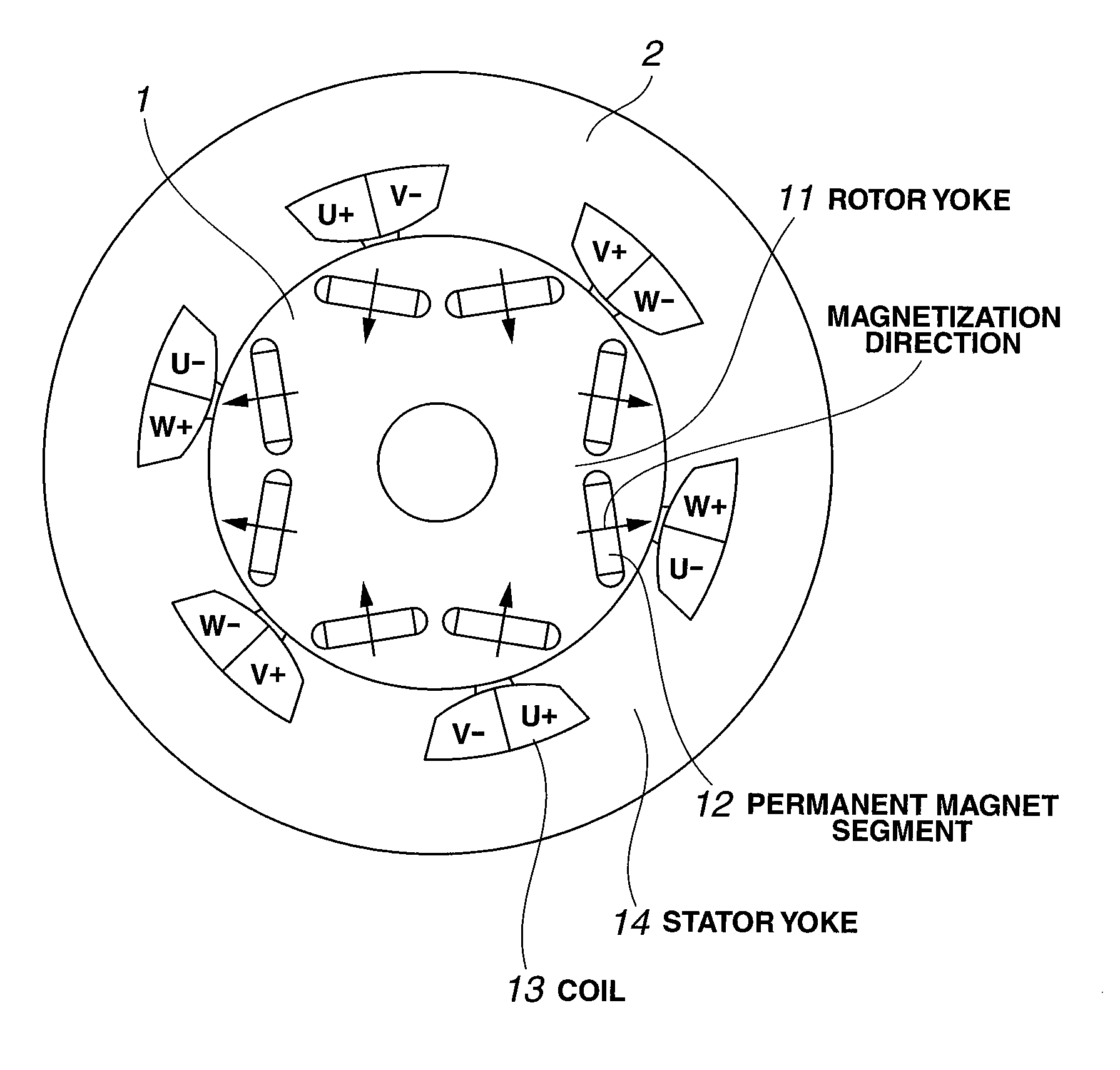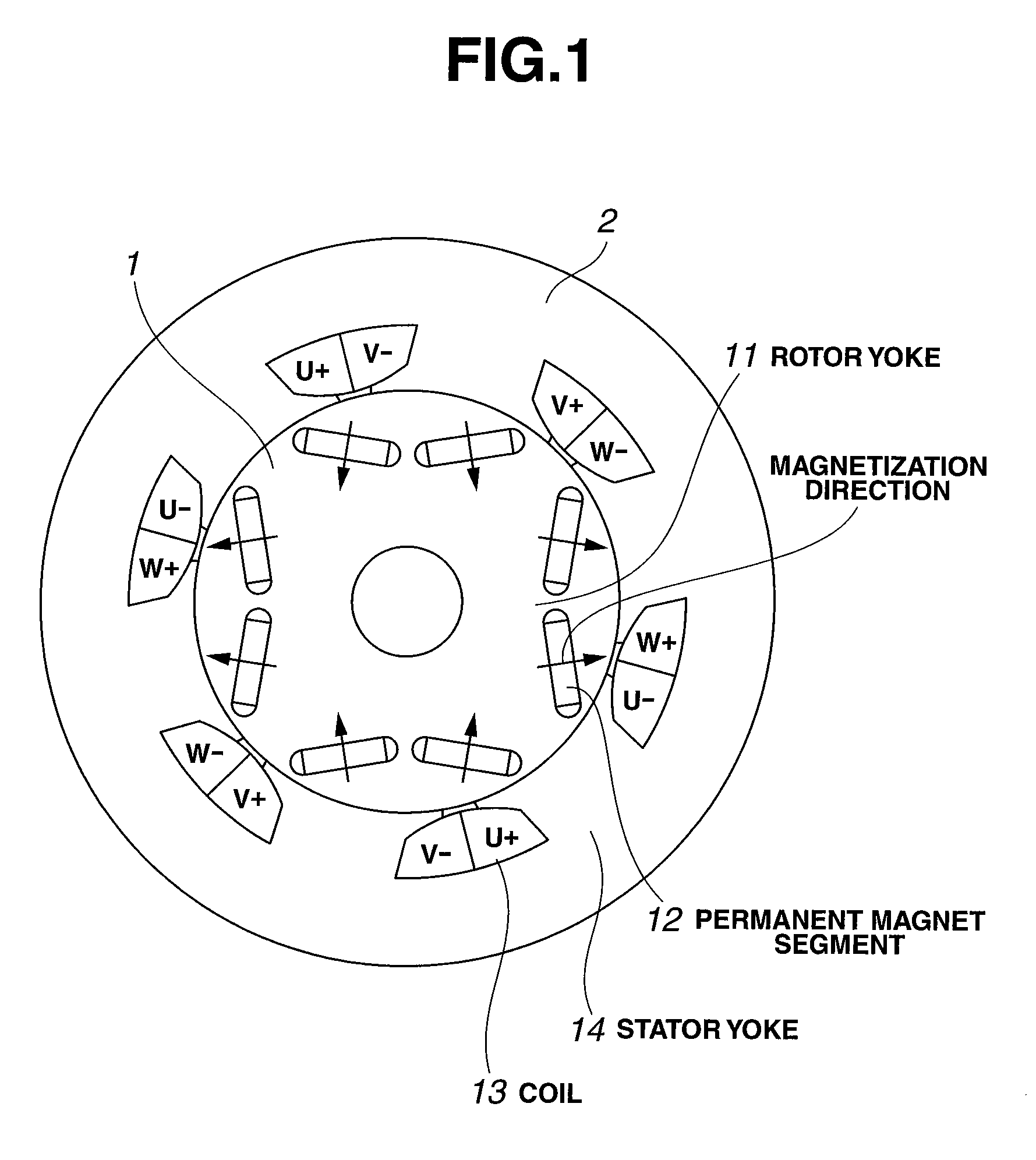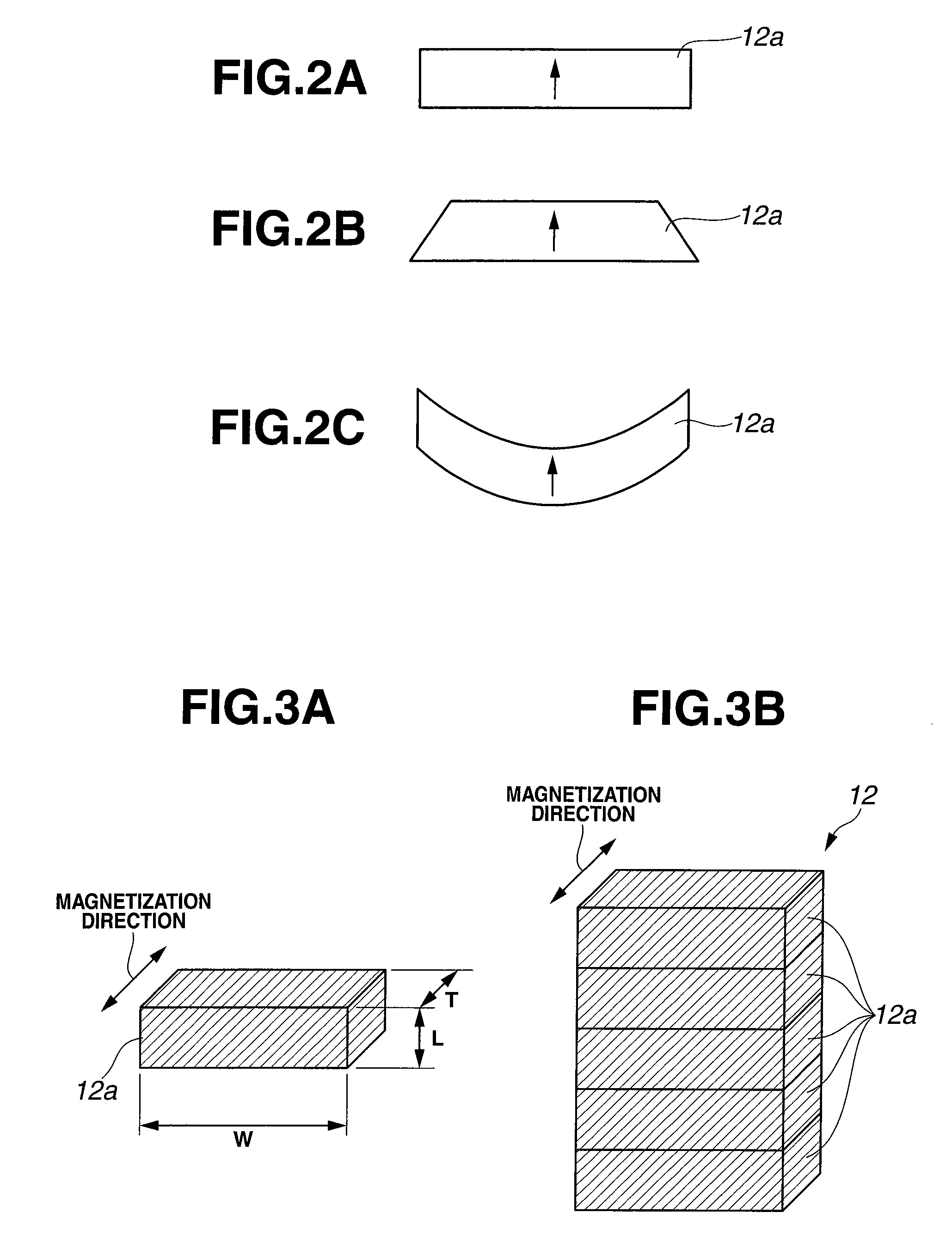Method for assembling rotor for use in IPM rotary machine
a rotary machine and rotor technology, applied in the field of permanent magnet rotary machines, can solve the problems of increasing machining costs and parts abraded, and achieve the effects of high coercive force, high heat resistance, and high remanen
- Summary
- Abstract
- Description
- Claims
- Application Information
AI Technical Summary
Benefits of technology
Problems solved by technology
Method used
Image
Examples
example 1
[0073]A thin plate of alloy was prepared by a so-called strip casting technique, specifically by weighing predetermined amounts of Nd, Co, Al and Fe metals having a purity of at least 99% by weight and ferroboron, high-frequency heating in an argon atmosphere for melting, and casting the alloy melt on a copper single roll in an argon atmosphere. The resulting alloy was composed of 13.5 atom % Nd, 1.0 atom % Co, 0.5 atom % Al, 5.8 atom % B, and the balance of Fe and is designated Alloy A. Alloy A was hydrided and then heated at 500° C. for partial dehydriding while evacuating to vacuum. By this so-called hydriding pulverization, the alloy was pulverized into a coarse powder having a size of up to 30 mesh. Another alloy was prepared by weighing predetermined amounts of Nd, Tb, Fe, Co, Al and Cu metals having a purity of at least 99% by weight and ferroboron, high-frequency heating in an argon atmosphere for melting, and casting. The resulting alloy was composed of 20 atom % Nd, 10 ato...
PUM
| Property | Measurement | Unit |
|---|---|---|
| volume fraction | aaaaa | aaaaa |
| particle size | aaaaa | aaaaa |
| particle size | aaaaa | aaaaa |
Abstract
Description
Claims
Application Information
 Login to View More
Login to View More - R&D
- Intellectual Property
- Life Sciences
- Materials
- Tech Scout
- Unparalleled Data Quality
- Higher Quality Content
- 60% Fewer Hallucinations
Browse by: Latest US Patents, China's latest patents, Technical Efficacy Thesaurus, Application Domain, Technology Topic, Popular Technical Reports.
© 2025 PatSnap. All rights reserved.Legal|Privacy policy|Modern Slavery Act Transparency Statement|Sitemap|About US| Contact US: help@patsnap.com



